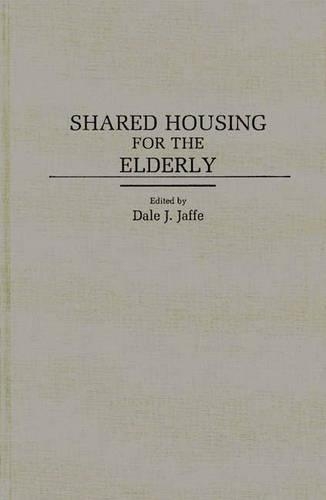
Shared Housing for the Elderly
(Hardback)
Publishing Details
Shared Housing for the Elderly
By (Author) Dale J. Jaffe
Bloomsbury Publishing PLC
Praeger Publishers Inc
30th November 1989
United States
Classifications
Tertiary Education
Non Fiction
Care of the elderly
363.59
Physical Properties
Hardback
214
Description
This book is the first collection of original essays on the topic of elderly shared housing. The approach is multidisciplinary and reflects a rare combination of applied and academic analyses. The focus is on agency-assisted shared housing, a form of shared housing in which a homesharing agency matches a homeprovider, usually an elderly person with room to spare in his or her home and often with needs for assistance, with a homeseeker, usually a younger adult who seeks an inexpensive living arrangement. With the increasing scarcity of moderate- and low-income housing in many regions of the nation and the increasing costs of formal community-based services for the elderly, such homesharing options are becoming increasingly attractive for old and young alike. The first section of the book includes four introductory essays. The goals of this section are to provide a broad descriptive analysis of the history, growth, and current issues facing the shared housing movement, to consider both the urban and rural environments as contexts for shared housing programs, and to offer an overview of shared housing research. The second section contains three chapters which offer regionally specific perspectives on the development of shared housing programs. These include the states of Michigan, California, and the Canadian province of Ontario. Each chapter decribes the issues in service delivery system development within their particular geographic boundaries. The final section of the book contains six case studies of homesharing programs. They are located in Burlington, Vermont, Madison and Milwaukee, Wisconsin, Wichita, Kansas, and San Jose and Orange County, California. Most emphasize the organizational characteristics and dynamics of the programs, and some present qualitative and quantitative data on homesharing matches. A theme running through the analyses is the fact that community level variables influence the organizational form of the homesharing agency as well as the kinds of clients who are likely candidates for homesharing in particular communities.
Reviews
A collection of case and research studies that describes and analyzes the essential variables in planning community-based home-sharing programs for the elderly. Although the sharing of homes by unrelated adults is as old as the nation, it was not until the early 1970s that this practice became formalized as a social service program. The studies include rural and urban communities located in the Midwest and Western states. The organization model, funding sources, and community resources are some of the common elements that influence the successes or failures of programs. In rural areas, however, the elderly tend to be more suspicious of government programs than do their urban counterparts. Major factors motivating older people to choose a shared housing arrangement are economic concerns, companionship, and the need for security. The studies examine reasons for entering into a shared home arrangement, the matching process, duration of placements, and participants' satisfaction. An excellent resource for students and researchers in gerontology and social welfare, for social welfare practitioners, and for community planners.-Choice
Sharing Housing for the Elderly is well developed across sections with an introductory section pointing out thematic areas and commonalities across chapters, The chapters are remarkably comparable in quality and readability for an edited book. . .-Educational Gerontology
"Sharing Housing for the Elderly is well developed across sections with an introductory section pointing out thematic areas and commonalities across chapters, The chapters are remarkably comparable in quality and readability for an edited book. . ."-Educational Gerontology
"A collection of case and research studies that describes and analyzes the essential variables in planning community-based home-sharing programs for the elderly. Although the sharing of homes by unrelated adults is as old as the nation, it was not until the early 1970s that this practice became formalized as a social service program. The studies include rural and urban communities located in the Midwest and Western states. The organization model, funding sources, and community resources are some of the common elements that influence the successes or failures of programs. In rural areas, however, the elderly tend to be more suspicious of government programs than do their urban counterparts. Major factors motivating older people to choose a shared housing arrangement are economic concerns, companionship, and the need for security. The studies examine reasons for entering into a shared home arrangement, the matching process, duration of placements, and participants' satisfaction. An excellent resource for students and researchers in gerontology and social welfare, for social welfare practitioners, and for community planners."-Choice
Author Bio
DALE J. JAFFE is Assistant Professor of Sociology at the University of Wisconsin, Milwaukee. He wrote Caring Strangers: The Sociology of Intergenerational Homesharing and articles published in The Gerontologist and the Journal of Gerontological Social Work.
